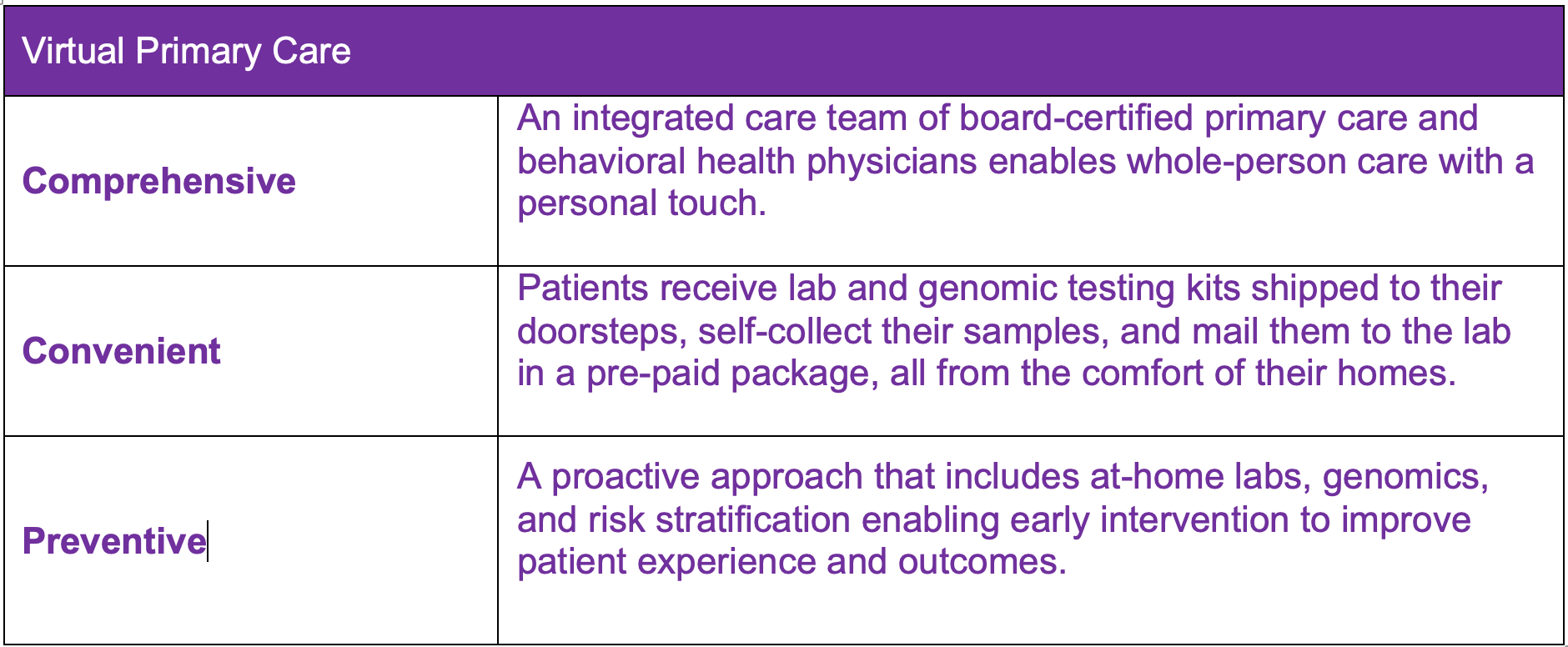BY M ICHAEL GORTON
As a quintessential entrepreneur, I’ve spent my career utilizing the latest innovations to disrupt the healthcare and telecom sectors. As a co-founder of Teladoc I discovered that everyone in the care chain – patients, physicians, and (even) health systems – are hungry for change. They want care to be more convenient

As an agent/broker, you’re a vital part of the equation.
For example, perhaps you already have clients asking about virtual digital care solutions to make primary, mental health and urgent care needs better integrated, and secure, with sharable data. With Teladoc, we increased efficiency and launched a quarter trillion-dollar industry. Now, our focus is to take that telemedicine efficiency engine, and create an entirely new industry using our trademarked Digital Medical HomeTM. Recuro is dedicated to catching maladies before they become dangerous and expensive.
I’ve learned is that there is no reinvention of healthcare delivery without buy-in from payers. This truth was recognized in a 2015 article published in Health Affairs. The authors noted that “…health care remains expensive and inaccessible to many because of the lack of business-model innovation.”
As the founder of Teladoc, I learned that it was the brokers who helped us pave the road for the telemedicine revolution. It is time for us to do it again.
What is Disruptive Technology?
A disruptive technology reinvents the normal operations of a market. According to the Corporate Financial Institute, the phrase “disruptive technology” was coined by Clayton
M. Christianson, a Harvard Business School professor. In the early days of Teladoc, Christianson became interested in us, and labeled us disruptive. Hah! Mom always told me not to be disruptive, but here we are!
There are two types of disruptive technology, according to Christianson: sustaining or disruptive.
With its Macintosh, Apple computers introduced both disruptive technologies and sustaining innovation. Macintosh was ahead of its time, with unheard-of features such as a mouse, easily navigable menus, graphic interface, and expandable memory. The iPhone was one of the greatest disruptive innovations on the last two decades. At the time of introduction of the iPhone, virtually no one predicted that within ten years, everyone would be carrying a supercomputer, high-def camera, GPS mapping, entertainment device, cell phone in their pocket. How many industries did the iPhone disrupt? Many of us now even visit our healthcare provider through our smart phone.
Five disruptive technologies trends to watch in healthcare delivery
The potential for change in healthcare delivery has not gone unnoticed by big tech and retail companies. Consider recent proposed alliances announced between CVS and Aetna, as well as Walmart and Humana. Amazon, Apple, Google, and Berkshire Hathaway are also searching for partnerships to disrupt the healthcare market.
Here are five insights to think about when it comes to tech and disruption in health care:
- Healthcare has been slow to adapt to technology disruption: Look around, and you’ll see service delivery revolution everywhere outside of health care. Such customer-facing innovations as ride-hailing and banking (check deposits on our phones!) are taken for granted. Tesla is now the larges market cap auto maker. Kodak is gone. Even though 2021 set a record for healthcare investments, most venture capital investments flowed outside healthcare.One of the significant barriers in healthcare is that unlike other sectors, bureaucracy and political barriers to entry prevail. We experienced this repeatedly while building Teladoc. Seldom did a week pass when we did not get told by some governmental body, that telemedicine should be illegal, and we should go to prison.
- Disruptive technology can fix many of the long-time problems in healthcare: Patients are more prone to developing an expensive medical crisis that might have been managed with preventable care through better access. Patients from urban to rural learned to appreciate telemedicine and virtual care during the COVID-19 pandemic. About half of all visits were virtual through telehealth. While that utilization has settled to about 20-25% as the crisis has subsided, one should remember the rate was near zero in 2020, before COVID-19. This trend indicates an opportunity to deliver better broader care with improved primary, mental health and urgent care outcomes.
- Health systems know that disruptive tech is now necessary for them to compete: Telemed offers three distinct advantages. These include store-and-forward (improved push capability to accumulate patient medical records, such as tests and consults), remote monitoring and the already mentioned real-time interactive services. Health systems see the opportunity. Hospitals understand that to be relevant to their patients, they must innovate with disruptive technology. Such progress is critical in meeting new value-based payment models in the works. The challenge is that 90% of payments are still aligned with disease and injury treatment. This is good news for payers and brokers as the current low adoption rate means tremendous disruption opportunities.
- There have been cyber security breaches as care providers make the disruptive technology transition – but the solution is better security: The news is full of hacker raids on patient records – 2021 was a “dire year,” according to HeathcareITNew, with 40 million such breaches reported to the government. However, data is the common language that allows disruptive technologies to launch. The solution is better security, not to avoid the transition. Consider that a 2021 Pew survey of nearly a thousand innovators, developers, researchers, activists, business leaders and policy leaders found that 85% believe post-pandemic digital changes will be permanent by 2025.
- Patients (and their employers) will reward providers and payers who meet their demands for disruptive digital integration: With the federal rules that went into effect this year on price transparency, the patient payment sector got another boost with digital disruption transition in play for the past few years. Companies such as Waystar have been in growth and acquisition mode as health systems discover they can glean patient loyalty and goodwill by giving patients the same digital convenience they get in other aspects of their lives. The growth is demonstrated in a 2021 U.S. Bank survey that nearly 70% of patients report they are still getting their medical bills in the mail. Despite this, as early as 2019, 60% of younger patients said they would switch healthcare providers over a poor digital experience. Further, almost half (46%) of all consumers reported in 2021 that they prefer electronic communications for medical bills, including emails, text messages, in-app messages and live chats. (See: www.fiercehealthcare.com/tech/60-younger-patients-will-switch-healthcare-providers-over-a-poor-digital-experience-survey).
As an agent/broker, you’re a vital part of the equation.
For example, perhaps you already have clients asking
about virtual digital care solutions for primary,
mental health and urgent care needs.
Virtual primary care expands and improves the promise of telehealth
Despite the innovation and disruption, our healthcare system remains a reactive system. For the most part, we only visit our doctor when we are sick. The next of telehealth innovation is Virtual Primary Care (VPC). We can now deploy the genomic and risk assessment tools to stay ahead of the curve while addressing the demand for more convenient access to care; and ever-increasing measures to reduce costs. These challenges are powerfully addressed by VPC, a beneficial evolution of telemedicine that is a true digital health solution.
Telehealth uses digital information and communication technologies, such as computers and mobile devices, to access health care services remotely. While the inception of telemedicine greatly expanded the convenience of remote care, virtual primary care goes even farther, delivering a relationship-centered version of personalized holistic care with remote-capable services that support a patient’s digital healthcare journey — from wellness visits and preventative to urgent and chronic care — all within a virtual environment.


MICHAEL GORTON, MS, JD, is CEO and cofounder of Teladoc and Recuro Health. He is an entrepreneur, author and strategic visionary with decades of experience building industry-changing companies, contributing to innovation in telecom and healthcare. As founding CEO,
Michael leads Recuro Health with its digital solutions that are transforming healthcare from a reactive model to a preemptive virtual private cloud (VPC). At Recuro, the goal is to help catch things before they become dangerous and expensive.
The Texas Business Hall of Fame appointed Michael to its 2022 Board based on his entrepreneurial spirit and personal dedication to integrity and community leadership. Michael was awarded Ernst & Young Entrepreneur Of The Year® 2022 Award, one of the preeminent competitive business awards for entrepreneurs, and named Tech Pioneer in Healthcare by the World Economic Forum.
Michael was a presenter at LAAHU’s 2022 Annual Symposium in April in Pasadena, Calif.
Contact: mgorton@RecuroHealth.com
